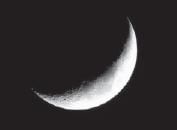Olympiad Test Level 2: Our Earth and Universe- 1 - Class 6 MCQ
10 Questions MCQ Test - Olympiad Test Level 2: Our Earth and Universe- 1
The sun, the moon and all those objects shining in the night sky are called _________.
The word planet came from _______ language.
Which is the farthest planet to the sun?
What is the term given to matter in the middle layer of the Earth which is liquid and hot, and escapes through cracks in the surface?
A weather map shows information about atmospheric pressure and weather fronts. Which type of Earth scientist works on developing and interpreting weather maps?
Which of the following statements is incorrect about Milky Way?
In 1774, a British clergyman named Joseph Priestley conducted an experiment in which he focussed sunrays on a tube containing mercuric oxide. This produced a gas which he noticed made candles burn brighter, thus discovering a gas which is the very essence of life. What gas was it?

Shobit observes the moon which looks like as shown in the picture. How long will it be before Shobit sees the moon in the same phase again?

Identify the Cassiopeia constellation in the given picture.














